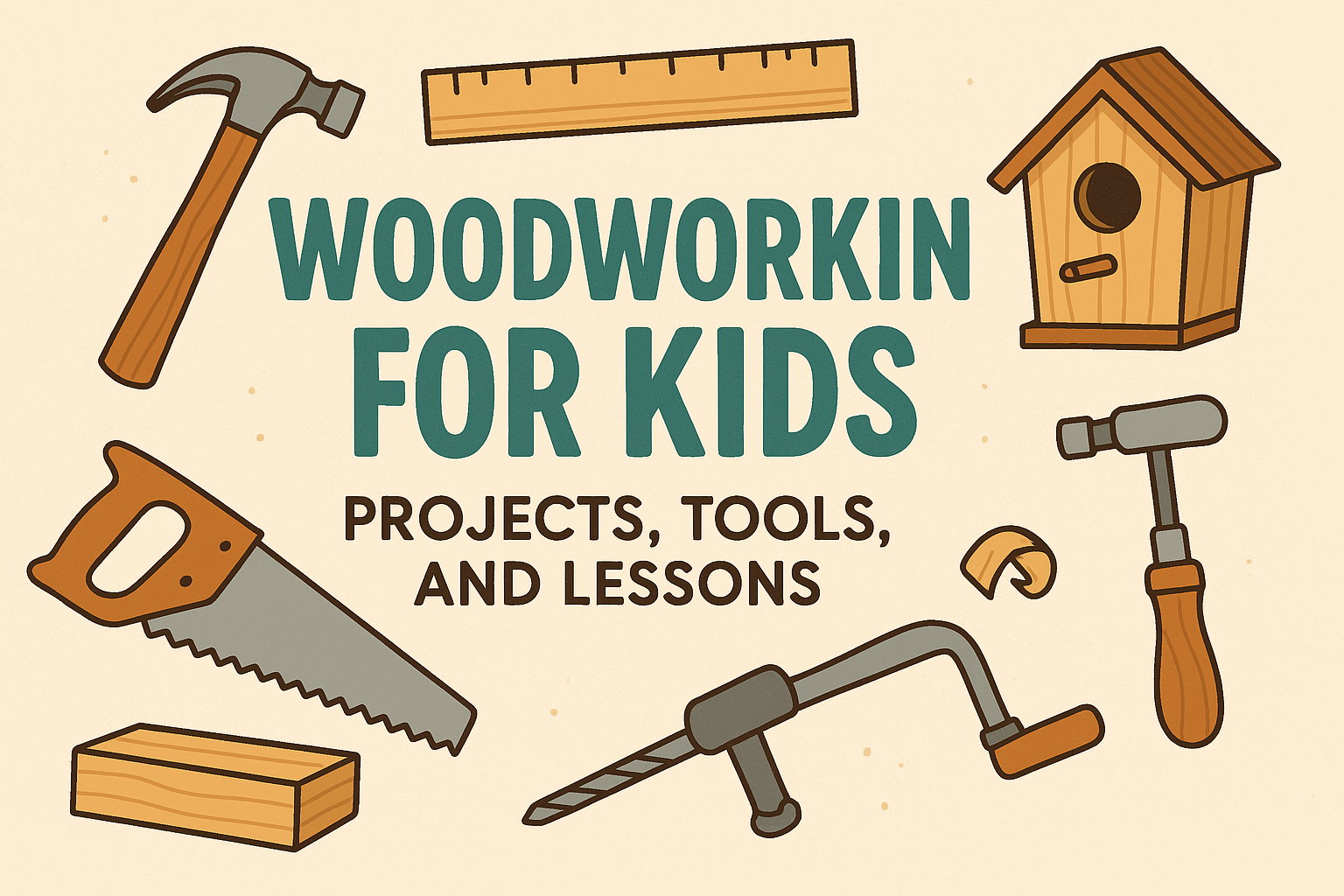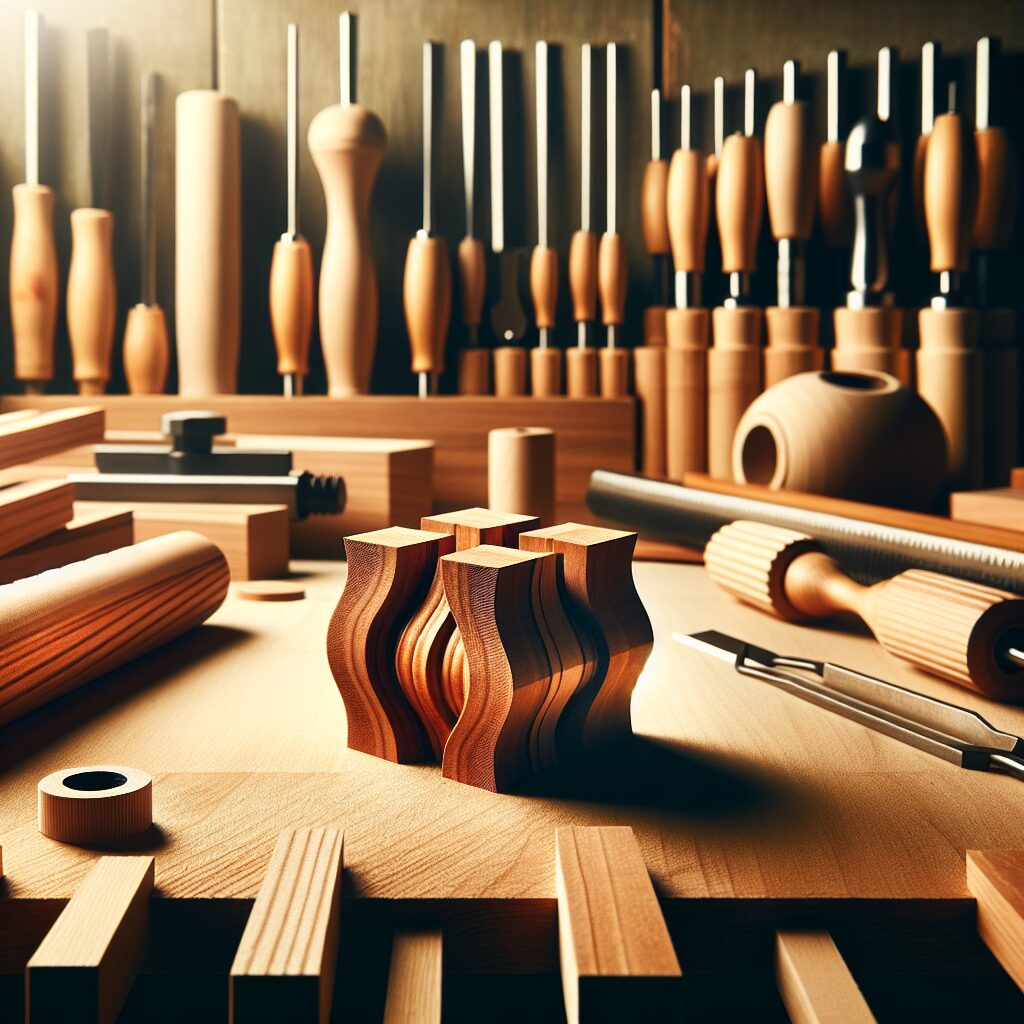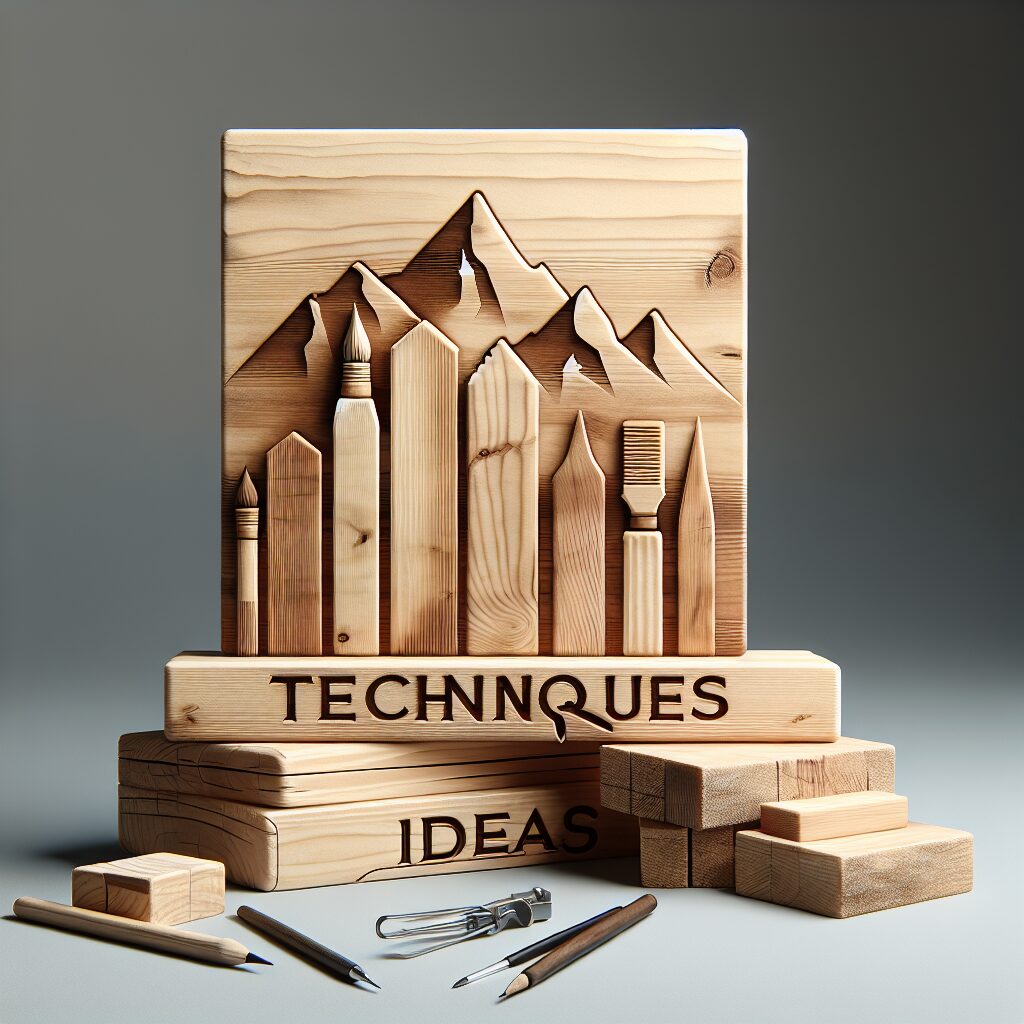Woodworking for kids isn’t just about creating cool stuff out of wood—it’s a powerful way to build confidence, creativity, and hands-on problem-solving skills. In a world full of screens and digital distractions, giving children the chance to work with their hands can be incredibly rewarding. This guide will walk you through the benefits, beginner-friendly tools, safety tips, and project ideas to get your kids started with woodworking today.
Woodworking also fosters patience and builds resilience. Each project brings challenges, but working through them teaches perseverance. Children gain a deeper understanding of effort and outcome, a lesson that can influence how they approach academics, sports, and life in general. Whether they’re sanding a rough piece of wood or hammering nails into a birdhouse, these experiences stick with them.
Why Kids Should Learn Woodworking Lessons
There’s more to woodworking than just hammers and nails. For kids, it can be a full-on educational journey. Woodworking lessons help build life skills, foster resilience, and allow children to discover the joy of creating something from raw wood. It’s a lesson in patience, planning, and pride.
Many schools and after-school programs are beginning to introduce woodworking into their curriculum. This shift recognizes that kids need more hands-on learning opportunities to complement traditional academics. Woodworking also provides a tactile outlet for kids who may struggle with abstract concepts or who benefit from kinesthetic learning.
Why Wood Projects are Great for Kids to Work and Grow
Introducing kids to woodworking has a range of benefits that go beyond just making wooden toys or birdhouses. These lessons extend well beyond the workshop and into daily life, improving everything from communication to focus.
1. Boosts Creativity and Imagination
Woodworking encourages kids to turn their ideas into reality. Whether it’s a simple pencil holder or a miniature car garage, children learn to plan, experiment, and express themselves creatively.
Creative development plays a critical role in a child’s growth. When woodworking is treated as art and craft, children become more confident expressing unique ideas. They also learn to trust their instincts and believe in their vision.
2. Develops Fine Motor Skills
Using hand tools like hammers, screwdrivers, and sanding blocks helps improve hand-eye coordination and fine motor control—essential skills for writing, sports, and more.
This improvement in dexterity translates into other aspects of a child’s life. Even tasks like tying shoes or cutting food become easier as kids gain confidence using their hands. Woodworking, therefore, becomes a foundational skill that supports independence.
Add in the experience of drilling small holes and fitting wooden pieces together, and you’re creating fine-tuned coordination that will last a lifetime.
3. Promotes Patience and Focus
Woodworking teaches kids that good things take time. Measuring twice, cutting once, and assembling parts fosters attention to detail and perseverance.
When kids work on projects over time, they build endurance and develop long-term focus. This ability to see a task through to the end is a vital life skill that builds discipline and work ethic.
As they finish more woodworking projects, they become more mindful, organized, and eager to tackle new designs with care and confidence.
4. Encourages STEM Thinking
Designing a project, measuring dimensions, and solving build problems introduces kids to concepts of math, engineering, and critical thinking in a hands-on way.
By turning lessons into real objects, woodworking helps demystify STEM for younger learners. When children see how a measured cut affects the final build, they naturally engage with geometry and logical thinking.
5. Builds Confidence
There’s nothing like seeing a project come to life. When kids complete a woodworking project, they experience a tangible sense of achievement.
This hands-on success builds intrinsic motivation. Kids are proud to share what they’ve made and eager to show others. These confidence-building moments create a positive feedback loop that encourages continued learning.
What Can Kids Do With Woodworking Tools and Materials?
From building shelves to making birdhouses and stick puppets, the possibilities are endless when it comes to wood projects for children. Here are a few unique and creative ideas beyond the basics:
- Stick Puppets: Using scrap wood, paint, and glue, kids can make their own characters for storytelling.
- Simple Wooden Tops: A timeless project that teaches balance and symmetry.
- DIY Wooden Building Blocks: Great for younger children to build castles, towers, and more.
- Quiet Bin Projects: Think of mini birdhouses or wood puzzles kids can assemble independently.
- Wooden Name Signs: Kids love personalizing their space. Let them carve or paint their names onto wooden plaques.
- Photo Frames: Add magnets to small wooden frames to make refrigerator art that showcases family moments.
These projects can be made even more exciting by incorporating paint, stickers, or wood-burning tools (for older kids). Encourage your children to add their personality to everything they build. Try letting them design their own piece from scratch using scraps of material you already have in your shop.
Is Woodworking Safe for Kids to Work With?
Yes—with the right tools, supervision, and guidance. Safety is the #1 priority when it comes to woodworking for kids. Here’s how to ensure a safe experience:
Kid-Friendly Safety Tips
- Start with soft woods like pine or balsa. They’re easier to cut and shape.
- Always supervise—especially when using sharp tools or power tools (if age-appropriate).
- Provide safety gear: safety goggles, dust masks, and gloves for sanding.
- Teach proper tool handling and cleanup from day one.
- Designate a safe, clutter-free workspace where accidents are less likely to happen.
Establishing a consistent safety routine is crucial. Make it part of your woodworking time to check that gear is in place and that tools are being handled properly. Over time, these safety habits will become second nature for your kids.
Best Tools for Kids to Start With
You don’t need a full workshop to get your kids started in woodworking. Here are some beginner-friendly tools perfect for small hands:
| Tool | Purpose | Age Range |
|---|---|---|
| Wooden Mallet | Tapping joints, hammering pegs | 5+ |
| Hand Drill | Safe manual drilling | 6+ |
| Sanding Block | Smoothing surfaces | 5+ |
| Small Hammer | Lightweight for easier handling | 7+ |
| Ruler & Tape Measure | Measuring materials accurately | 5+ |
| Safety Saw (non-electric) | Cutting small pieces of soft wood | 8+ (with supervision) |
You don’t need a full workshop to get your kids started in woodworking. Here are some beginner-friendly tools perfect for small hands:
ToolPurposeAge RangeWooden MalletTapping joints, hammering pegs5+Hand DrillSafe manual drilling6+Sanding BlockSmoothing surfaces5+Small HammerLightweight for easier handling7+Ruler & Tape MeasureMeasuring materials accurately5+Safety Saw (non-electric)Cutting small pieces of soft wood8+ (with supervision)
💡 Pro Tip: Always read tool instructions and use tools designed for kids when possible.
In addition to the basics, consider adding clamps, wood glue, and a small toolbox. These tools teach organization and responsible care of materials. As your child’s skills grow, they can graduate to screwdrivers, small chisels, saws, and level tools.
Let them take ownership of their own toolbox and workbench setup. Having a dedicated space to practice and learn fosters independence and responsibility.
Exploring the Workshop: Setting Up a Safe and Inspiring Space
Creating a small shop or workshop space at home can motivate kids to engage more frequently with their tools and wood projects. It doesn’t need to be fancy—a section of the garage, a corner in the basement, or even a portable workbench in the backyard can do the trick. What matters most is that it feels like their space.
Equip your workshop with essential hand tools, a workbench, and clearly labeled bins for organizing materials like pine scraps, nails, screws, and sanding blocks. Add visual aids like tool charts or step-by-step diagrams to reinforce learning and foster independence. Keep all sharp tools stored safely and always inspect the area together before and after each session.
Teaching Kids to Use Hand Tools and Power Tools Safely
Introducing power tools can be thrilling—but only if the proper lessons and safety measures are in place. Start with supervised lessons on cordless drills, sanding tools, and small saws. Always begin with manual hand tools so children can understand the mechanics of woodworking before adding speed or automation into the mix.
Emphasize the importance of understanding each tool’s purpose. Kids should be able to identify when and why to use a coping saw vs. a handsaw or a sanding block versus an orbital sander. These lessons build a foundation of respect for both the materials and the tools, and they empower children to be confident and careful woodworkers.
Building Skills Through Progressive Woodworking Projects
Woodworking skills don’t develop overnight. Start with simple projects like wooden bookmarks or block toys. As their confidence grows, gradually introduce more complex builds like a jewelry box, toolbox, or birdhouse.
One excellent intermediate project is a wooden storage box with hinged lids. This not only improves measuring and drilling accuracy but also teaches children about hinges, hardware, and finishing techniques. For older children, collaborative projects like a small bench or garden planter box are perfect for group work and showcasing their advancing skills.
Encourage the use of designs and blueprints. Even a basic sketch helps teach spatial reasoning and planning. Allow your young woodworker to make design decisions—it enhances ownership and strengthens problem-solving.
Using Woodworking to Teach Responsibility and Planning
Woodworking isn’t just about construction—it’s a valuable opportunity to teach time management and responsibility. Encourage kids to map out a timeline for their project, gather materials before they start, and clean up afterward. These habits instill a sense of order and pride in their work.
Create a checklist for each project that includes steps such as choosing materials, designing the layout, measuring, cutting, assembling, sanding, painting, and finishing. Having this repeatable process will help children feel capable, structured, and more invested in the final piece.
Cutting Techniques and Woodworking Skills
Teaching your child cutting techniques should come with clear instructions and hands-on practice. Always supervise cutting activities, and start with:
- Scored line cuts for precision
- Guided saw tracks for safety
- Draw and plan first before sawing any wood
As your child grows more skilled, they can move from soft pine to more solid hardwoods. Gradual progression keeps things interesting and skill-building.
Favorite Kid Projects in Quiet Bin Format
When your little ones want a calmer session, try offering a Quiet Bin with all the supplies for a simple woodworking project—like a porcupine craft made from drilled blocks and toothpicks. These bins are great for:
- Independent, mess-free exploration
- Practice in planning and assembling
- Reducing screen time in a creative way
- Encouraging focus and mindfulness through quiet work
Rotate the projects in your bins to keep interest high. You can also create seasonal-themed woodworking bins, like holiday ornaments, miniature gardens, or mini sailboats.
FAQs About Woodworking for Kids
Q: What age is appropriate to start woodworking?
A: Kids as young as 5 can start with simple tools like sanding blocks and wooden mallets. With supervision, kids 7+ can use hand tools and complete beginner projects.
Q: Should I buy a woodworking kit or gather supplies myself?
A: Beginners benefit from kits with pre-cut parts. As confidence builds, you can start sourcing your own materials.
Q: Can woodworking help my child’s development?
A: Absolutely. It supports physical, cognitive, and emotional growth, and helps children build useful life skills.
Q: What if I don’t have much space at home?
A: A fold-out table, corner of the garage, or backyard setup can be all you need. Even a small plastic mat indoors can serve as a work zone.
Q: How do I keep woodworking fresh and exciting?
A: Rotate projects, introduce new tools slowly, and let kids vote on what to build next. Try themed weeks, like “Build for Nature” or “Toys You Design.”
Final Thoughts: From Simple Tools to Lifelong Skills
Woodworking for kids is a doorway into creativity, focus, and craftsmanship. With each project—whether simple or complex—kids are learning how to work with their hands, make design decisions, and see their efforts materialize. Through hand tools and safe, supervised use of power tools, they gain confidence and capability.
Set up a dedicated workspace, explore creative ideas together, and encourage them to take on real-world problems with their projects. Before you know it, your young builder may grow into a skilled woodworker who appreciates both the art and the discipline of the craft.







